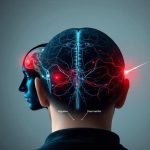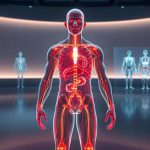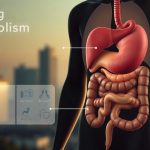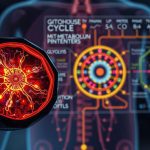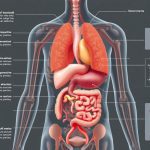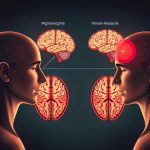What Is Difference Between Migraine And Headache Do you experience pain on one side of your head, or is it simply a normal headache? We confuse these terms with so many people. But, migraines and headaches are actually quite distinct.
What Is Difference Between Migraine And Headache
What’s the Difference Between Migraine and Headache?
Do you experience pain on one side of your head, or is it simply a normal headache? We confuse these terms with so many people. But, migraines and headaches are actually quite distinct. They have different symptoms and treatments.
We’re going to explore the key differences between headaches and migraines. This will clarify for us what they are and how to cope with their symptoms.
Read More: What Foods Speed Up Female Metabolism

Key Takeaways
Migraines and headaches are often confused, but they have distinct characteristics.
Understanding the differences is crucial for effective treatment and management.
We’ll explore the symptoms, causes, and treatment options for both conditions.
Knowing the differences can help you better manage your symptoms.
We’ll provide you with the knowledge to identify whether you’re experiencing a migraine or headache.
Understanding Headaches and Migraines
It is significant to understand the difference between headaches and migraines. Both are responsible for head pain, but they are different. They require different methods of treatment.
Headaches may result from numerous causes such as tension or sinus. Migraines, however, are a unique type of headache with neurological features.
Common Types of Headaches
There are numerous types of headaches. Each type has its own set of symptoms and causes. Tension headaches, cluster headaches, and sinus headaches are the most prevalent ones.
Tension Headaches
Tension headaches are similar to a band around your forehead tightening. They may be the result of stress, poor posture, or tightened muscles.
Cluster Headaches
Cluster headaches are extremely painful and occur on one side of your head. They even cause your eye to tear, become red, and swell.
Sinus Headaches
Sinus headaches result from infection or inflammation in your sinuses. They produce pain in your nose, forehead, and cheeks.
- Type of Headache
- Characteristics
- Common Triggers
- Tension Headache
- Band-like pressure across the forehead
- Stress, poor posture
- Cluster Headache
- Severe, one-sided pain
- Unknown, perhaps hormonal change
- Sinus Headache
- Pain in nose, forehead, and cheeks
- Sinus infection, allergies
Migraine as a Neurological Condition
Migraines are headaches, but they are more than that. Migraines are a neurological disorder with severe pain, typically on one side of the head. They can also cause you to feel ill, vomit, and be sensitive to light and sound.
Genetics and environmental factors are believed to trigger migraines. Hormonal changes, foods, and stress can bring them on. The know-how of what to watch for in terms of triggers and symptoms is important for the control of migraines.
What Is Difference Between Migraine And Headache
It is essential to understand the difference between migraine and headache in order to manage them effectively. Both are associated with pain in the head, but differ significantly otherwise. This impacts the way we diagnose, treat, and cope with them.
Key Distinguishing Features
Migraines and headaches have distinct differences. Migraines have intense, throbbing pain on one side of the head. They also have sensitivity to sound and light, nausea, and vomiting. Headaches are milder or more severe and also come in different types.
- The table below indicates some distinct differences:
- Characteristics
- Migraine
- Headache
- Pain Location
- Typically one-sided
- One-sided or bilateral
- Pain Quality
- Pulsating or throbbing
- Varies (dull, sharp, pressing)
- Associated Symptoms
- Nausea, vomiting, sensitivity to light and sound
- Differ based on type (e.g., tension headache can have muscle tension)
Read More: High-protein weight loss
Effect on Daily Life and Functionality
Both migraines and headaches will significantly interfere with our day-to-day lives. Migraines are particularly bad, and it is difficult to do anything. Individuals usually have to lie down in a quiet dark room.
Headaches can be uncomfortable but usually don’t stop us as much as migraines do. Still, frequent or chronic headaches can lower our productivity and quality of life.
Knowing these differences helps us manage our conditions better. It also guides us to seek the right medical care when needed.
Symptoms of Headaches
Headaches may appear in numerous ways. It is necessary to know the symptoms to be able to manage them. Symptoms may vary much depending on the headache.
Tension Headache Symptoms
Tension headaches are experienced as a band of pressure across the forehead. The pain is often mild to moderate. It may also tighten the neck and shoulder muscles. Unlike migraines, tension headaches do not typically cause nausea or vomiting.
Cluster Headache Symptoms
Cluster headaches have a severe, sharp pain on one side of the head, usually near the eye. Some of their other symptoms are the redness and swelling of the involved eye, congestion in the nose, and restlessness. They do occur in clusters or cycles.
Other Types of Headaches and Their Symptoms
Other headaches are the sinus headaches, which are brought with sinus pressure and nasal discharge, and the hypnic headaches, which affect elderly people and wake them up from sleep. The symptoms of each are all different and can direct diagnosis and management.
As highlighted by headache specialists, “Understanding the specific characteristics of each headache type is crucial for effective management.”
“The diversity of headache syndromes requires a holistic approach to diagnosis and treatment.” – Headache Specialist
Read More: Healthy Protein Diet For Weight Loss

Phases and Symptoms of Migraines
Migraines are complicated and can significantly impact one’s life. Understanding the various phases helps the sufferers control their symptoms better. This can reduce their migraines to a lesser degree.
Prodrome Phase: Early Warning Signs
The prodrome stage begins hours or days prior to the headache. It is characterized by mood changes such as irritability or depression. Physical symptoms such as fatigue or neck stiffness also arise. Identifying these symptoms at the early stage can prepare one for the migraine.
Aura Phase: Visual and Sensory Disturbances
Not everybody develops an aura, but it precedes the headache if one does. It is characterized by visual symptoms such as flashing lights or blind spots. Occasionally, there is a change in the senses such as numbness or tingling. These are brief and differ from individual to individual.
Attack Phase: Pain and Associated Symptoms
The attack phase is the most severe stage of a migraine. It’s when the pain from the headache is most intense. It is usually followed by nausea, vomiting, and sensitivity to light and noise. The pain may be so severe that it is difficult to do everyday things, so controlling it effectively is essential.
Postdrome Phase: Recovery Period
Once the headache subsides, the postdrome stage begins. It is a period of fatigue, confusion, or mood swing. This can last for days or hours. Although pain has ceased, it is still difficult to return to normal activities.
- Migraine Phase
- Common Symptoms
- Prodrome
- Mood swings, fatigue, neck stiffness
- Aura
- Visual disturbances, sensory changes
- Attack
- Headache pain, nausea, light and sound sensitivity
- Postdrome
- Fatigue, confusion, mood swing
Causes and Triggers
Figuring out what causes headaches and migraines is key to lessening their effects. Knowing what leads to these issues helps us find ways to avoid or handle these triggers better.
Common Headache Triggers to Avoid
Many things can trigger headaches. Knowing what they are can help us prevent them.
Environmental Factors
Things like bright lights, loud noises, and weather changes can cause headaches. Knowing this helps us take steps to prevent them.
Lifestyle Factors
Our lifestyle behaviors, such as stress, sleep deprivation, and poor nutrition, may contribute to more frequent headaches. A healthier lifestyle can minimize the frequency of getting a headache.
Physical Factors
Physical conditions, such as muscle tension and incorrect posture, can also trigger headaches. Regular exercise and maintaining correct posture will help eliminate these issues.
Migraine Triggers and Risk Factors
Migraines also have triggers of their own, distinct from common headaches. Identifying these triggers is crucial for effective management of migraines.
Hormonal Factors
Hormonal fluctuations, particularly in women, may precipitate migraines. Menstrual cycle changes, pregnancy, or menopause are frequent causes.
Food Triggers
Certain foods and beverages can trigger migraines. Caffeine, chocolate, and tyramine or MSG-containing foods are frequent offenders. A food diary may identify individual triggers.
Genetic and Environmental Factors
Genetic susceptibility and environmental conditions are large in migraine incidence. Understanding these can guide us in creating a management plan.
Recognizing and managing these triggers, we can decrease the number and intensity of headaches and migraines. This enhances our general quality of life.
Read More: Exercise To Reduce Belly Fat
How to Diagnose Your Head Pain
Head pain diagnosis requires knowing your symptoms, medical examinations, and occasionally, headache diaries. Being aware of the nature of head pain you are experiencing is essential in order to get proper treatment.
Monitoring Symptoms and Patterns
Monitoring your symptoms and patterns is a large step toward diagnosing head pain. By keeping track of when and how long your headaches occur, and what may trigger them, you assist your doctor. You can use a headache diary or a smartphone app.
Medical Tests and Evaluations
Medical examinations and tests are important in discovering the reason for your headache. Your physician may recommend imaging exams such as MRI or CT scans. They will also examine your medical history and perform a physical examination.
Employing Headache Diaries Effectively
Utilizing a headache diary can actually aid in diagnosing your head pain. Record when, for how long, and what your headaches are like, and any possible triggers. It informs your doctor about your condition and allows them to make an accurate diagnosis.
- Diagnostic Tool
- Description
- Benefit
- Headache Diary
- A log of headache events, symptoms, and triggers.
- Identifies patterns and possible causes.
- Medical Imaging
- Scans such as MRI or CT scans to look at the brain and eliminate underlying conditions.
- Gives a clear picture of any structural problems.
- Medical History
- A careful examination of your medical history to determine possible contributing factors.
- Helps you understand your overall health situation.
Treatment Options and Self-Management
Headaches and migraines require a combination of treatment and self-care. We will consider the various treatment options. This will enable you to control your symptoms better.
Over-the-Counter Solutions for Headaches
Over-the-counter (OTC) medications are usually the initial option for headaches. Mild to moderate headaches can be treated with pain medications such as ibuprofen and acetaminophen. Always adhere to the dosage and consult a doctor if you have concerns.
Prescription Drugs for Migraines
For migraines, you may require prescription medication. Triptans are medication that can assist by constricting blood vessels and inhibiting pain. Other possibilities are ergots, anti-nausea medications, and corticosteroids.
Non-Medication Strategies
There are non-medication strategies for headaches and migraines. Cognitive behavioral therapy (CBT), relaxation training, and biofeedback work. Also, maintaining regular sleep habits and stress management work.
Lifestyle Changes for Prevention
Lifestyle modification can prevent headaches and migraines. Proper eating, hydration, and avoiding headache and migraine triggers are important. Regular exercise can also decrease headache and migraine occurrence.
- Treatment Strategy
- Description
- Benefits
- Over-the-Counter Medications
- Pain relievers such as ibuprofen and acetaminophen
- Effective for mild to moderate headache
- Prescription Drugs
- Triptans, ergots, and anti-nausea drugs
- Aimed at migraine relief
- Non-Medication Strategies
- CBT, relaxation, and biofeedback
- Relaxes the body and eases symptoms
- Lifestyle Changes
- Food change, staying well-hydrated, and avoiding precipitates
- Prevents headache and migraine attacks
Read More: Fat Burning Foods For Belly Fat

When to Seek Medical Attention
It is important to know when to seek medical assistance if you have frequent or severe headaches and migraines. Although some are harmless and can be managed with over-the-counter medication, there are warning signs that indicate you should have a doctor’s examination.
Read More : Migraine vs Cluster Headache
Warning Signs That Indicate Quick Attention
- There are some signs of migraines and headaches that require immediate medical attention. They are:
- Severe headache occurring suddenly
- Headache accompanied by fever, confusion, or stiff neck
- Headache accompanied by neurological symptoms such as weakness, numbness, or change in vision
- Headache that improves over time or occurs with coughing, sneezing, or straining
- If you experience any of these symptoms, seek medical attention immediately.
- Symptom
- Description
- Action
- Sudden, severe headache
- Headache that peaks within minutes
- Seek immediate care
- Headache with fever and stiff neck
- Headache with fever and neck stiffness
- See a doctor immediately
- Neurological symptoms
- Weakness, numbness, or change in vision with headache
- Get medical evaluation
Getting the Right Specialist for Your Condition
If you get recurring or severe headaches or migraines, it is very important to find the right specialist. Begin by consulting your primary care physician. Your primary care physician can refer you to a:
Neurologist: A professional who specializes in brain and nervous system disorders
Headache specialist: A physician with special training in diagnosing and treating headache disorders
When searching for a specialist, look at how long they have been practicing, patient feedback, and what treatments they provide.
Conclusion
Migraines and headaches are confused with each other, yet they are not. It’s important to understand the differences in symptoms, cause, and impact on daily activities.
In order to differentiate migraines from headaches, we must observe their distinguishing signs. Migraines precipitate very severe, throbbing headaches and light and sound sensitivity. Headaches are mild or severe and are caused by numerous reasons, such as tension or cluster headaches.
In our discussion of migraines and headaches, we emphasized recognizing their differences. Recognizing their differences enables individuals to better manage their symptoms and receive appropriate treatment.
Recognizing the difference between a migraine and a headache is crucial to managing them. By realizing their differences, individuals can begin to feel better and lead a healthier life.
Read More: How To Cure Migraine Permanently
FAQ
What is the key difference between a migraine and a headache?
A migraine is a severe neurological disorder characterized by excruciating pain. It sometimes includes nausea, vomiting, and sensitivity to both light and sound. A headache, by contrast, is a catch-all term for a variety of different types of pain in the head.
How can I know whether I have a migraine or a tension headache?
To determine whether you have a migraine or tension headache, check your symptoms. Migraines tend to produce severe, throbbing pain on one side of the head. Tension headaches have a dull, ache type of feeling that is present on both sides.
What are the usual causes of migraines and headaches?
Causes of migraines and headaches are bright light and loud noise. Stress, not getting enough sleep, hormonal fluctuations, and some foods may also cause them.
How do I control my migraines and headaches?
To control migraines and headaches, monitor your symptoms and patterns. Steer clear of familiar triggers. Experiment with various treatments such as over-the-counter medications, prescription medications, and lifestyle modifications.
When should I see a doctor for my headaches or migraines?
Seek a doctor if you experience sudden, severe headache or if your symptoms worsen. Also, see a specialist if you are not certain of your diagnosis or require assistance in controlling your condition.
What is the difference between a migraine with aura and a migraine without aura?
A migraine with aura contains visual or sensory symptoms prior to the onset of pain. These may be flashing lights or zigzagging patterns. A migraine without aura contains no such warning symptoms.
Can I prevent migraines and headaches?
You can’t always prevent them, but you can minimize their frequency and severity. Know your triggers and avoid them, eat a healthy diet, and take preventive medications as directed by a healthcare provider.

